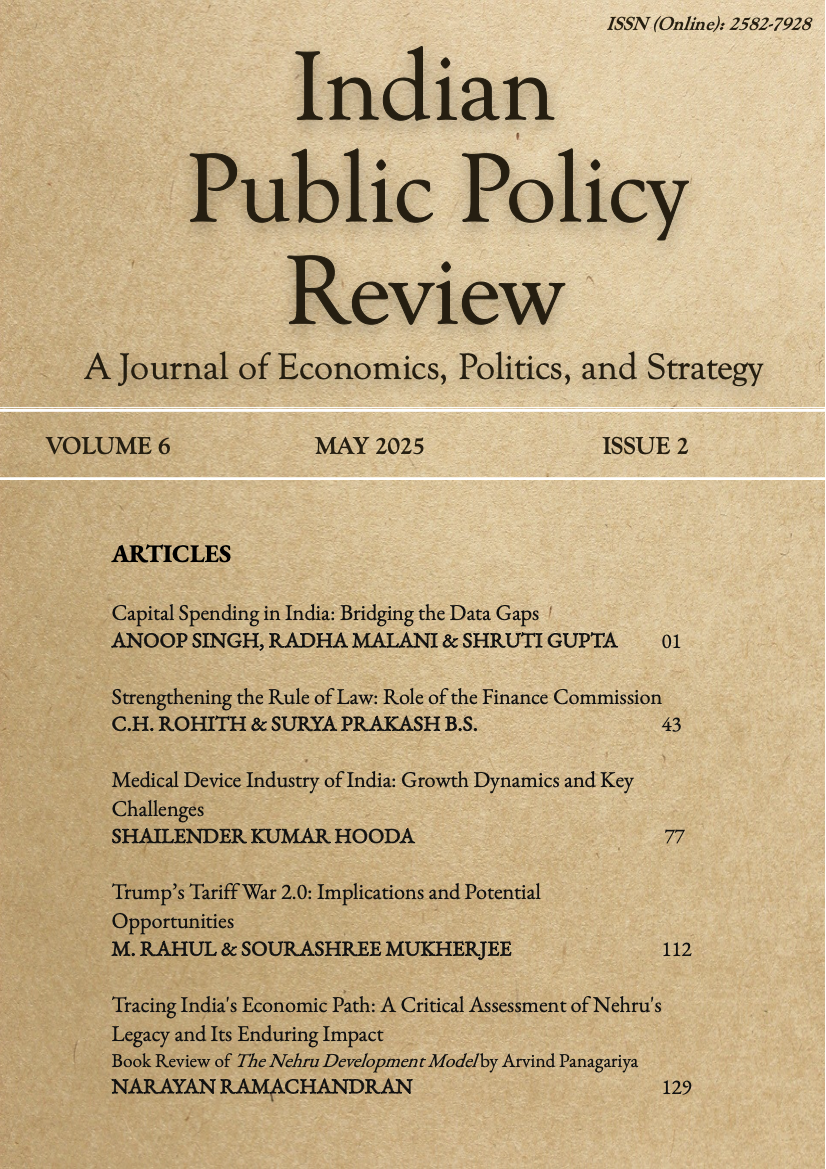Trump’s Tariff War 2.0: Implications and Potential Opportunities
DOI:
https://doi.org/10.55763/ippr.2025.06.02.004Abstract
This article explores the ramifications and possible opportunities arising from the tariff war initiated by President Donald J. Trump during his second term in office. Trump’s aggressive trade restrictions target several of the United States' trading partners, including China, Mexico, and Canada, invoking legislative provisions such as the International Emergency Economic Powers Act of 1977. The article provides an analysis of the historical context of US tariff policies, the timeline of recent tariff actions, and the rationale behind these measures, including national security and reducing trade deficits. The implications of these tariffs on global economic stability, investor confidence, and commodity prices are examined, along with strategic retaliation by affected countries. The paper also highlights India's position in this evolving trade landscape, identifying sectors with high potential to boost exports to the US market. This paper suggests that India could benefit from redirecting trade flows and enhancing its role in global value chains through appropriate policies.
Keywords:
India, Tariffs, International Trade, Reciprocal tariffs, Trump, Trade FlowsDownloads
References
Amiti, M., Redding, S. J. and Weinstein, D. E. (2019). The Impact of the 2018 Tariffs on Prices and Welfare. Journal of Economic Perspectives 33 (4): 187–210.
Casey, C. A. (2025). U.S. tariff policy: Overview (CRS Report No. IF11030, Updated January 31, 2025). Congressional Research Service.
Clarke, G.; Desai, R. M.; Hallward-Driemeier, M. C.; Irwin, T.; Messick, R. E.; Scarpetta, S.; Smith,W. P.; Tata, G. M.; and Vostroknutova, E (2005). World development report 2005 : a better investment climate for everyone.World Bank.
Gopinath, G., Gourinchas, P., Presbitero, A. and Topalova, P. (2024). Changing Global Linkages: A New Cold War? IMF Working Papers 2024, 076.
Office of the United States Trade Representative. (2025a). Reciprocal tariff calculations. https://ustr.gov/issue-areas/reciprocal-tariff-calculations
Office of the United States Trade Representative. (2025b). Ambassador Jamieson Greer Issues Statement on U.S.-UK Agreement in Principle. https://ustr.gov/about/policy-offices/press-office/press-releases/2025/may/ambassador-jamieson-greer-issues-statement-us-uk-agreement-principle
O'Rourke, K., Wandschneider, K. and Mitchener K. (2021). The ghost of Smoot-Hawley tells why America isn’t too big to avoid retaliation. VoxEU Column, Centre for Economic Policy Research (CEPR). https://cepr.org/voxeu/columns/ghost-smoot-hawley-tells-why-america-isnt-too-big-avoid-retaliation
Pant, M. (2002). The Millennium Round of Trade Negotiations: A Developing Country Perspective. International Studies, 39(3), 213-226.
The White House. (2025, February 1). Fact sheet: President Donald J. Trump imposes tariffs on imports from Canada, Mexico, and China. https://www.whitehouse.gov/fact-sheets/2025/02/fact-sheet-president-donald-j-trump-imposes-tariffs-on-imports-from-canada-mexico-and-china/
William, B. R. (2020) Trump Administration Tariff Actions: Frequently Asked Questions (CRS Report No. R45529, Updated December 15, 2020). Congressional Research Service.


